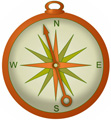Quilt No.731MR - Mary-O Roberts

1980 x 1730mm
This domestic Wagga was made by Mary-O Roberts (born Burnside), under the guidance of her mother-in-law Stella Roberts, at 'Pulgamurtie' Station via Broken Hill in 1959. It is still owned by Mary-O Roberts and is used at 'Gunnadoo' Morago Via Deniliquin NSW.
"When I married 44 years ago and lived outback of Broken Hill my mother-in-law was still making Waggas for family members, and had made them also as a young woman for when she and her husband were on the road carting wool by camel team. She also made them for her sons to take as swags when they were camped out on mustering trips, but they were also used on their beds at home at Pulgamurtie Station (150 miles N.W. of Broken Hill). There was no electricity out there and the winters are cold. My own Wagga was used by my son on camping trips and is still used on my own bed on very cold nights - (There is a certain comfort in the sheer weight of it!). As far as I know the use of jute wool packs as a filling was quite common on the wool growing properties and of course they would have the added advantage of being water-proof (and therefore relatively wind-proof) as well."
[ Extract letter from Mary-O Roberts 'Gunadoo' Deniliquin NSW 24.6.2000]
"Jute wool bales [were] sometimes called a Dalgetys Blanket, after Dalgety Stock and Station agents who supplied the bales to graziers."[Mary-O Roberts]
Related Quilts:
1270 x 950mm
2000 x 1600mm
2250 x 2100mm
1540 x 950mm






